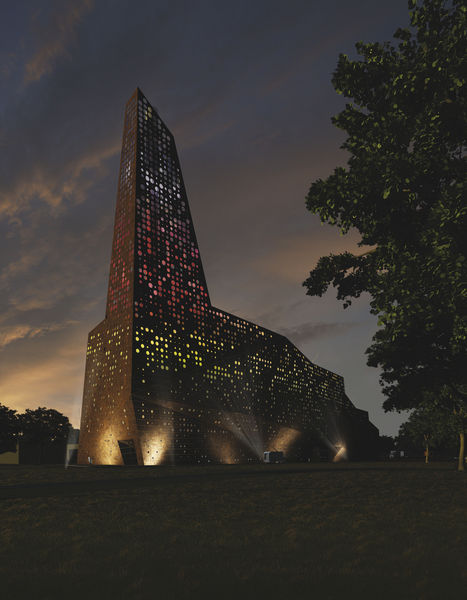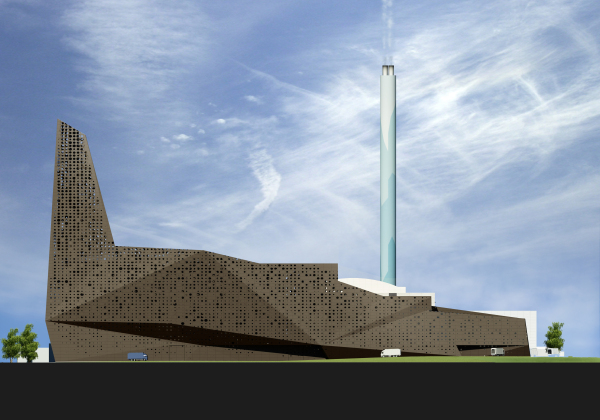The board of KARA/Noveren, Denmark’s leading waste to energy supplier, signed a contract with the Dutch Architect Erick van Egeraat for the realization of their new inceneration line at Roskilde [DK].
Erick van Egeraat won the design-competition for this incinerator in 2008 with his challeging and highy praised proposal to embrace both the historic and industrial heritage. It is a contempoprary Cathedral, close to the ground we shaped the building to reflect the angular factory roofs of the immediate surroundings”, says Erick van Egeraat. “We then let the building culminate in a 100 meter tall spire, which is an articulation of a fascinating and sustainable process in creating energy”
The large, outspoken, amber-colored design is likely to become a new icon for the wide and open landscape of the Roskilde area. After its completion in 2013, the facility is not only processing a large part of the local waste. This process produces both electricity and heating for the Roskilde district.
Today, waste to energy transition can be regarded as one of the environmentally-friendliest methods of creating heat and energy. The new incineration-line 6 will use the latest techniques and have a processing capacity from 260.000 to 350.000 ton per year. This will generate an output of electricity for 60.000 households each year.
Erick van Egeraat aims to give insight in the mostly hidden processes of transforming waste into energy. Laser-cut circular openings cover the raw umber-coloured aluminium façade. At night, backlighting of the perforated façade transforms the incinerator into a glowing beacon, symbolising the energy production inside the facility. For a few minutes every hour a spark gradually grows into a blazing flame eating up the entire building. The metaphoric fire then ceases, and the building falls into a state of burning embers.
The façade is composed of two layers, the inner layer ensures the daylight entry and air circulation. This ‘liberates’ the outer layer to be flexible in the patterning.

















